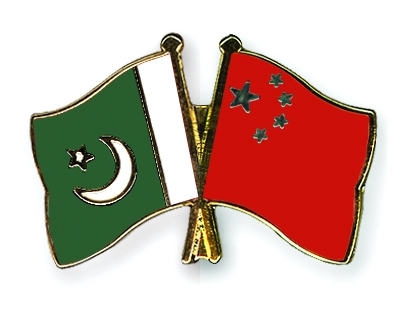Pakistan has always enjoyed a rather favorable strategic position in its region. This explains China’s longstanding interest in the country and its willingness to support the China-Pakistan Economic Corridor, a $46 billion economic project.
The economic corridor, seen as a pivotal stepping stone in the “all-weather” China-Pakistan relationship, will connect China’s autonomous Xinjiang region to Pakistan’s Gwadar Port. Opening new doors of economic opportunities in the region, the 3,000-km megaproject will have significant implications that can possibly alter the dynamics of global politics.
The deal will help strengthen Pakistan’s economy and cement its position in region. For China, CPEC will open new routes to the oil-rich Middle East. It will reinforce inter-regional ties and enable the region to stand on its own, with minimal reliance on the West, wrote the Japanese online international news magazine, The Diplomat.
While worrisome for a few, many countries are eying the multibillion-dollar corridor with interest. Recently, Pakistan’s President Mamnoon Hussain welcomed the wish of Central Asian states to join CPEC. Even Russia, which has had, at times, a tumultuous relationship with Pakistan, is now warming up to the country at the heart of the economic corridor.
With the possible inclusion of these new states in the deal, the possibility of CPEC becomes more tangible and resilient. However, for Pakistan, Iran’s inclusion in the deal will increase and multiply the corridor’s advantages. For this reason, Islamabad extended an invitation to Tehran, which has agreed to consider.
Iran’s Prospects
Iran’s economic growth has been stunted by global sanctions over its nuclear program. However, the historic nuclear deal with the P5+1, when implemented, will open up new possibilities.
With 10% of the world’s proven oil reserves, Iran’s entry into the business world has gotten Pakistani trade and economic representatives to scramble to Tehran with the intention of winning Iranian business interest. With billions of dollars worth of Iranian funds entering the global economy, nations are tweaking their financial plans to accommodate this surge of income. The oil-rich nation’s admittance into the global market will drastically alter the global oil market as well.
The energy-hungry China is looking for alternative routes to import oil. With Iran in the loop, China can double down on its access to Iranian oil. Moreover, the decades-old dream of the Iran-Pakistan gas pipeline can now be fully realized.
For Iran, CPEC will provide the country with much needed accessibility to the east.
China’s Prospects
For China, the corridor will provide an alternative route to the Persian Gulf through the Arabian Sea. The cost-effective route will make it possible for China to expand its interactions with African, Central Asian and Middle Eastern markets. Moreover, with Iran’s opening up, Chinese exports could become increasingly competitive in Tehran.
Simultaneously, Iran is eying as much as $100 billion worth of energy deals in the near future and Tehran’s abundant oil and gas reserves could find a thriving demand in China, too.
Pakistan’s Prospects
For Pakistan, the benefits of CPEC have already started showing. Similar to China, Pakistan’s relationship with the United States is deteriorating. The country needs to prosper economically, making it less reliant on the United States. The economic corridor will provide Pakistan with the perfect opportunity to stabilize itself economically while cultivating ties with its neighbors.
The world’s largest explosives manufacturer, Beijing Auxin Chemical Technology Limited, is all set to establish a plant in the country. The company will manufacture emulsion explosives which will “meet the future demand of explosives and blasting accessories in the light of CPEC, large-scale mining and hydroelectric projects.”
On the other hand, energy production being the current core concern of development authorities, Pakistan is expected take a major leap forward. Thar Coal Projects have been lined up as priority projects as part of CPEC, which in combination with two other harvest projects will be able to generate up to 2400 megawatts of power by 2018.
An agreement for the Lahore Orange Line Metro Project was also concluded earlier this April.
According to a web release by Norinco, a pioneer and leader of Chinese military trade, this multimillion dollar deal marks the first urban rail transit project in Pakistan under the “One Belt, One Road” Chinese framework.
Apart from the obvious benefits to Pakistan’s power production, logistics, transportation, communication and freight handling industries, CPEC will also immensely benefit the country’s real estate running along the trade corridor.
According to Zeeshan Ali Khan, CEO of Zameen.com, “The CPEC’s positive effects on Pakistan’s real-estate sector have already started showing. Gwadar, the town at the center of the trade commotion, has started witnessing a heightened demand in anticipation of better times to come as property prices have spiked by more than 200% in just a few months.”
While the real-estate sector grows exponentially, Pakistan’s Minister of Commerce Khurram Dastagir Khan also offered the countries making up Shanghai Cooperation Organization’s access to Pakistani ports to gain access to seaways from the Arabian Sea when the CPEC becomes functional.
With all this development going on, the China-Pakistan-Iran axis in South Asia is looking up and huge affinities in inter-regional trade could be around the corner.
Iran’s decision to join CPEC would not only usher in an era of improved living standard across the Sistan-Baluchestan region by facilitating trade among Islamabad, Beijing and Tehran, but also provide a cost-effective gateway to the Persian Gulf for other Asian countries like Russia and even India.


